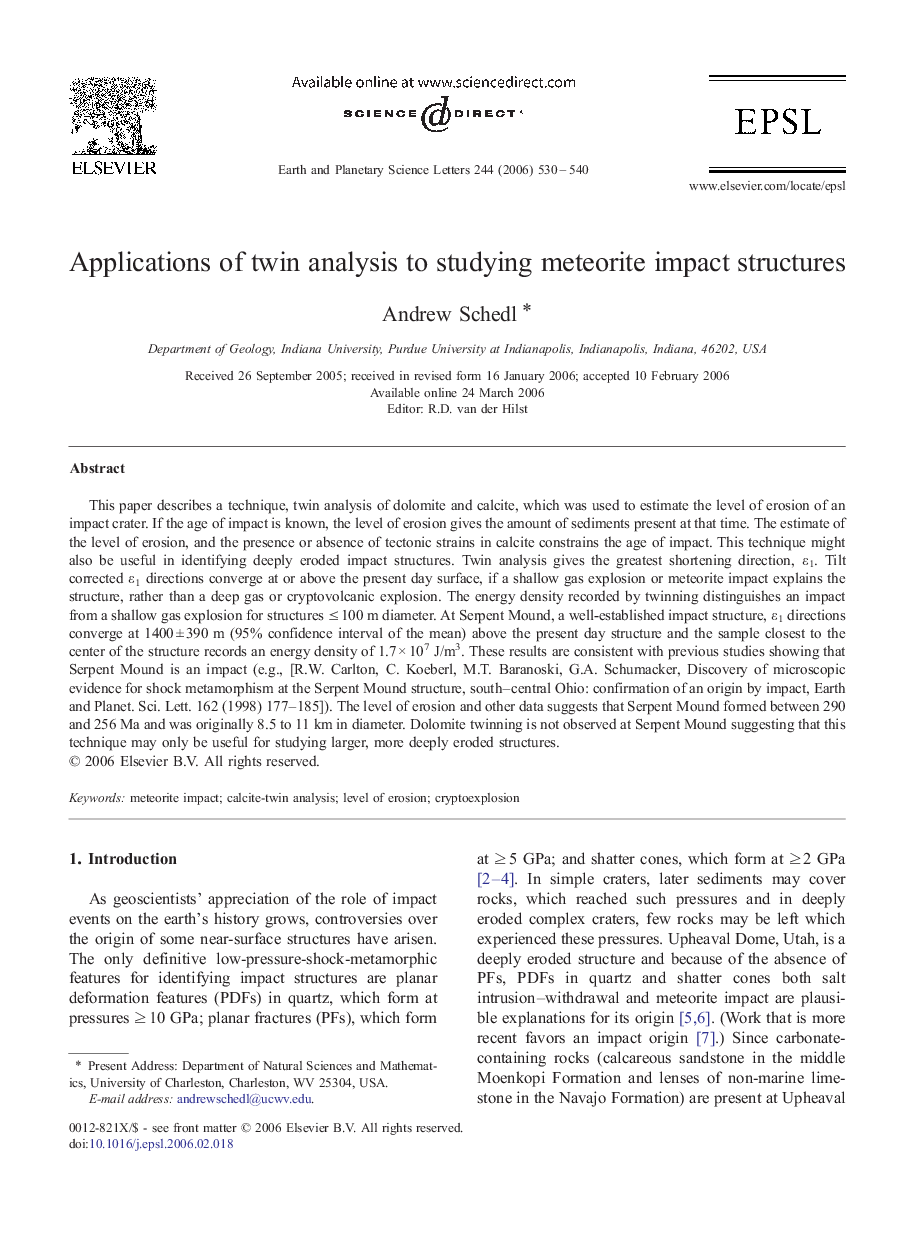| کد مقاله | کد نشریه | سال انتشار | مقاله انگلیسی | نسخه تمام متن |
|---|---|---|---|---|
| 4681030 | 1634946 | 2006 | 11 صفحه PDF | دانلود رایگان |
عنوان انگلیسی مقاله ISI
Applications of twin analysis to studying meteorite impact structures
دانلود مقاله + سفارش ترجمه
دانلود مقاله ISI انگلیسی
رایگان برای ایرانیان
کلمات کلیدی
موضوعات مرتبط
مهندسی و علوم پایه
علوم زمین و سیارات
علوم زمین و سیاره ای (عمومی)
پیش نمایش صفحه اول مقاله

چکیده انگلیسی
This paper describes a technique, twin analysis of dolomite and calcite, which was used to estimate the level of erosion of an impact crater. If the age of impact is known, the level of erosion gives the amount of sediments present at that time. The estimate of the level of erosion, and the presence or absence of tectonic strains in calcite constrains the age of impact. This technique might also be useful in identifying deeply eroded impact structures. Twin analysis gives the greatest shortening direction, ε1. Tilt corrected ε1 directions converge at or above the present day surface, if a shallow gas explosion or meteorite impact explains the structure, rather than a deep gas or cryptovolcanic explosion. The energy density recorded by twinning distinguishes an impact from a shallow gas explosion for structures â¤Â 100 m diameter. At Serpent Mound, a well-established impact structure, ε1 directions converge at 1400 ± 390 m (95% confidence interval of the mean) above the present day structure and the sample closest to the center of the structure records an energy density of 1.7 Ã 107 J/m3. These results are consistent with previous studies showing that Serpent Mound is an impact (e.g., [R.W. Carlton, C. Koeberl, M.T. Baranoski, G.A. Schumacker, Discovery of microscopic evidence for shock metamorphism at the Serpent Mound structure, south-central Ohio: confirmation of an origin by impact, Earth and Planet. Sci. Lett. 162 (1998) 177-185]). The level of erosion and other data suggests that Serpent Mound formed between 290 and 256 Ma and was originally 8.5 to 11 km in diameter. Dolomite twinning is not observed at Serpent Mound suggesting that this technique may only be useful for studying larger, more deeply eroded structures.
ناشر
Database: Elsevier - ScienceDirect (ساینس دایرکت)
Journal: Earth and Planetary Science Letters - Volume 244, Issues 3â4, 30 April 2006, Pages 530-540
Journal: Earth and Planetary Science Letters - Volume 244, Issues 3â4, 30 April 2006, Pages 530-540
نویسندگان
Andrew Schedl,